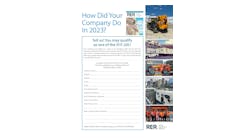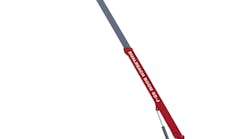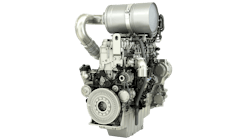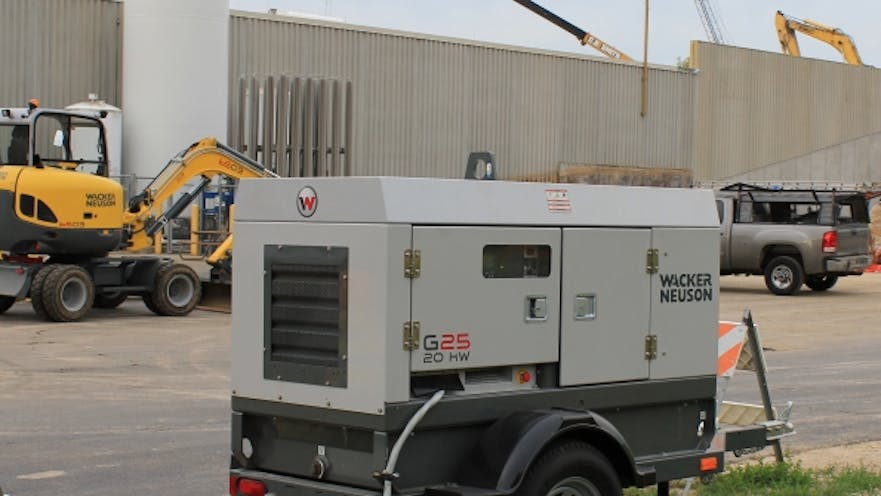Anybody can rent out a generator, and sometimes when emergencies occur, almost anybody will. But it takes more than buying a machine and writing up a rental contract to do it the right way. RER consulted rental and manufacturing experts to offer some words of wisdom for renting, delivering, maintaining, testing and more.
1. Always make sure the generator has been tested with a load bank for proper operations prior to shipment, says Jimmy Bender, Louisiana sales manager, Energy Rental Solutions-Cat.
“This will burn off the excess carbon in the exhaust system caused by wet stacking,” adds Dave Mansbart, senior manager and product specialist, Able Equipment Rental. “Wet stacking occurs when running light loads on the generator.”
2. The generator should be washed, clean and visually appealing. Rental customers tend to lack confidence in a machine that looks uncared for.
3. The generator is to be properly serviced and all fluids and filters should be in the proper state. The ongoing daily service is typically the responsibility of the customers but the rental company should make sure that the responsibility is agreed upon and understood.
4. Always deliver the generator on time. When delivering a generator, the hitch needs to be properly rated for the weight of the trailer, says Eric Massinon, business development manager at Chicago Pneumatic. “In the case of trailers that feature pintle eyes on the front, it is important to have the type of hitch on the back of the truck that includes a hook,” he says. “Put a safety pin in so it won’t open unexpectedly. If the trailer has a ball hitch, make sure it is tight on the ball, that it the right size ball for the hitch.”
5. Buy rental-specific generators. “Select a manufacturer up front that builds rental-specific product,” says Ben Froland, product manager, global power generation at Wacker Neuson. “Rental generators can have a rough existence being towed over logging or lease roads before ever being started up. Once in place, they can be subjected to dusty or salty environments, heavy motor starting events, highly transient loads, or continuous running at maximum output. It is imperative that proven components be used such as the engine, alternator, and controller. The components must also be packaged in a robust manner that ensures the generator will start reliably every time with a long service life.”
6. Match the generator to the customer’s load. “Ask probing questions to find out what size generator they really need,” Froland advises. “Is it used for motor starting, pump jack, temporary power? Customers tend to oversize their generators ‘just in case.’ If you can help steer them into the right machine for their job, they won’t overspend and the rental company will get fewer phone calls for issues related to oversizing, such as wet stacking.”
“Many customers call and size the generator based on the total amperage of the electrical panel they are powering,” adds Mike Madej, rental manager, Patten Power Systems. “Most of the time, this will lead to oversizing the unit, which could be very costly, and not good for the generator performance.”
EPA Final Tier 4 generators need to operate at no less than 30 percent of their rated loads, says Donna McGinnis, senior marketing manager for Generac Mobile Products. “Operating under this load threshold may lead to a condition called wet-stacking, which can lead to issues including excess fuel usage for the regeneration,” McGinnis says.
7. Also load-bank your generators when they return. If the customer did oversize the generator, chances are it is developing unseen issues. Load-banking the generator is cheap insurance to avoid wet stacking and after-treatment issues and ensures it will produce maximum power for the next customer.
8. Keep up with recommended service intervals. Oil is the life blood of any engine. Modern diesel engines are incredibly reliable and many brands are extending the service intervals from 250 hours to 500 hours. This is great news for rental companies looking to save on maintenance costs, but is also makes adhering to those recommended intervals much more crucial. Falling behind on the oil change will result in accelerated wear on the engine, the most expensive component in the generator.
9. Read and follow the manufacturers’ operating instructions, says Chicago Pneumatic’s Massinon. Make sure customers know what the total power requirement is for the rental. Do not undersize or oversize the generators for projects. And don’t forget that electricity can kill. Make sure the customer has a certified electrician available for connecting the power.
10. Selection is important, Massinon adds. General rental centers should think about utilization. How often do customers come in looking for certain size generators? Typically for the smaller rental centers, smaller portable generators from 2,000-watt portable invertors to 40-kW tow-behind generators will fit most of their customer requirements. However, larger rental companies and specialty rental centers servicing the industrial segment will usually cover the 50 kW and up requirements.
11. Engine-driven generators give off carbon monoxide. Always run generators outdoors and away from building intake.
12. High voltage from generators can kill; do not operate in wet locations and only use UL-Listed, properly sized transfer switch gear and properly sized cables or extension cords.
13. Do not connect to a building or system that is still connected to the grid.
14. Make sure the generator is connected to a proper ground. Proper grounding reduces many of the risks associated with generator operation, including tripped breakers, short circuits that produce sparks or arcing, and uncontained electrical current.
15. Do not overload a generator. If a generator is overloaded, it will trip and shut down to protect the machine from being damaged. Likewise, if an engine experiences problems, the machine will shut down to prevent complete engine failure. An emergency stop button that immediately terminates operation is another common feature on most mobile generator models.
16. Never fuel a running or hot engine.
17. The operator should never change the voltage selector switch while the generator is running.
18. Conduct a site visit in advance to identify any potential obstructions or safety concerns. “When sizing or designing a temporary generation system, it’s always preferable to make a jobsite visit first if possible,” says David Scott, region vice president, United Rentals Power & HVAC. “As the scope of the system becomes more complex, the need for a visit becomes more paramount. The purpose of the jobsite visit is to become familiar with the working environment, safety requirements, delivery and pick-up routes, and potential impacts on other trades. It’s also useful to evaluate the footprint available for the placement for the temporary equipment and any specific customer expectations, like technical and performance parameters.”
19. There are additional points of information a field-site review will bring, adds Scott. “Typically, this includes the load size in amps, generator voltage – traditionally 480v or 208v – and the distance from the generator to the connected load,” he says. “It’s also important to confirm that a portable unit may be placed somewhat close to the connected load, and whether an external fuel tank is required for prolonged run-time. As the customer’s needs become more complex, additional information is required. For example, is connected load voltage (if other than 480v or 208v) required for transformer sizing? If it’s a critical load, is a backup generator needed? Define the connected load and select equipment based on the load characteristics: traditional mechanical or electrical equipment, motor-starting, and whether it requires single or multiple points of connection.”
20. The cable is an important aspect of the generator, points out ERS Cat’s Bender. Ensure that cable being used exceeds the amperage capacity of the generator. Ensure that cable is properly rated for the voltage and amperage, as well as inspected for defects prior to shipment. Make certain cable length is sufficient to connect to customers’ tie-in points.
21. Make sure that the lugs on the generator buss are clean and free of corrosion.
22. Make sure the customer has all of the proper accessories to use the generator safely.
23. Know the duty cycle of the generator. Is the generator going to run a single shift, double shift, or 24 hours a day?
24. Is bigger always better? Just because a generator is large, doesn't mean it's appropriate for all aspects of a project, says Generac’s McGinnis. “If you have a job site that's large, it makes more sense to have multiple, smaller generators spaced out on different areas of the jobsite,” she says.
25. Have a backup plan. Plan to have a backup generator on the jobsite, so work doesn't have to stop if a generator won't start, says Jeff Magedanz, marketing manager for Generac Power Systems.
26. How many points of connection are on the jobsite? “If multiple points of connection are required, this triggers a need for more information: the proper sizing of a distribution panel and various breakers, power distribution safeties, the proximity of the distribution panel to amps, and the lineal feet of cable required,” says United Rentals’ Scott. “In addition, there are certain considerations unique to low voltage (120-volt power distribution systems). How many circuits are required? What’s the nature of the load connected to the circuits – lighting, food preparation, courtesy outlets? Finally, are there any sound restrictions to be aware of? This is typical of temporary event projects.”
27. Paralleling: Equipment availability and control of operational costs are critical to competing in the power rental business, says Angel Nieto, product manager power & light, Atlas Copco Construction Equipment North America. There are many factors that influence these crucial aspects, including “an efficient paralleling system brings the versatility needed in applications with a high variability in the load profile – for example, when powering up pumps. In addition, paralleling allows for better balance in the accumulated running hours among fleet units for expanded generator life and optimized scheduling of maintenance routines.”
28. Rental companies should be willing to provide demos for customers that are unfamiliar. Offer them for free or for a small fee if it is required onsite, suggests Patten Power Systems’ Madej.
29. Typically, the customer is responsible for maintenance on the unit during the duration of the rental contract, adds Madej. The rental company should offer preventive maintenance services for a fee. The agreement should be clear about whether the unit will be running single, double or triple shift. “The generator operator should do periodic checks of running gauges, including voltage, amperage draw and fuel levels,” Madej says.
“The No. 1 key for a well-maintained generator is following the manufacturer guidelines for scheduled maintenance,” says Spencer Hale, utility services manager, Hugg & Hall Equipment Co., offering information from Doosan Portable Power. “Recommended generator maintenance intervals typically start at 500 hours of use and focus on filters and fluids, including the engine oil, oil filter, fuel filter and air filter. These intervals are generally repeated every 500 to 1,000 hours.
“Daily, weekly and monthly generator maintenance, on the other hand, includes checking machine components such as fluids, wiring and hose connections and looking for signs of trouble such as leaks, blocked air inlets and parts that may be susceptible to wear. A simple two-minute inspection could save one to two hours of downtime to replace a minor part. For example, a frayed or cracked fan drive belt is an opportunity for preventive maintenance instead of waiting for it to fail and cause a machine shutdown.”
30. Be creative with rates: Many rental companies will offer a significant price reduction if the unit is only going to be used as a standby source of power.
31. Encourage customers to plan well in advance for the best possible service.
32. Consider carefully the location where the generator will be staged to run, says Patten’s Madej. “Make sure it is in a well-ventilated area, and has a level surface. It is always a good idea to check the tires to prevent the generator from moving unexpectedly.”
“[Making sure the unit is level] not only includes front to back but also side to side,” Able’s Mansbart says. “Depending on where your fuel pickup tube is located, you can severely reduce your fuel capacity.”
33. Adjust to the environment. Maintenance intervals should be scheduled more frequently for generators operating in harsh environments or challenging weather conditions. Dusty environments are particularly demanding on generators. Radiator fins should be checked for dust buildup and cleaned with a pressure washer to ensure optimal airflow through the machine, reducing the risk of the machine overheating.
Ambient temperature also plays a role in proper generator maintenance. When a generator is operating in colder temperatures, lightweight synthetic oil may be necessary to ensure adequate oil flow to vital engine components. A thicker oil grade may be recommended to provide better engine protection in hot climates.
34. Understand new Tier 4 maintenance requirements. After-treatment systems are now part of the generator maintenance checklist, so it’s important to be familiar with those elements and the prescribed service intervals.
35. Maintenance beyond the engine. Periodic inspection of the electrical system can go a long way toward preventing generator damage and downtime. Inspecting all wiring can often head off a major electrical problem with a simple fix such as tightening a loose wire, insulating a rubbing hazard or bending a wire away from a sharp edge.
36. Safety tip: Before opening anterior door or grabbing onto the enclosure of the generator, touch the enclosure with the back of your hand, says Able Equipment’s Mansbart. “If there is a problem and the enclosure is energized, your hand will automatically be pulled back off the enclosure,” he cautions. “If you grab the door handle and it’s energized, your hand will grasp the handle and not let go. Do this whether or not the generator is running. You never know what issues may be downstream of the cables.”
37. Think about the fuel source, says Anne Feudner, product manager, Kohler Power. “Offer your mobile generator customers the flexibility to run on diesel, natural gas or propane,” she says. “Depending on the application, propane and natural gas can provide substantial savings – especially for applications requiring long run times.”
38. Clarify if the customer desires a trailer-mounted or skid-mounted unit and ensure that equipment is available for off-loading when needed, says ERS-Cat’s Bender.
39. Ride along: In many cases, power equipment is rented for touring rock shows or plays. Rental staff should be prepared to travel along and be there in case anything goes wrong.
40. Silence. When powering any type of live performance, sound-attenuated units are a must. Generators can be seen, but they certainly cannot be heard.









